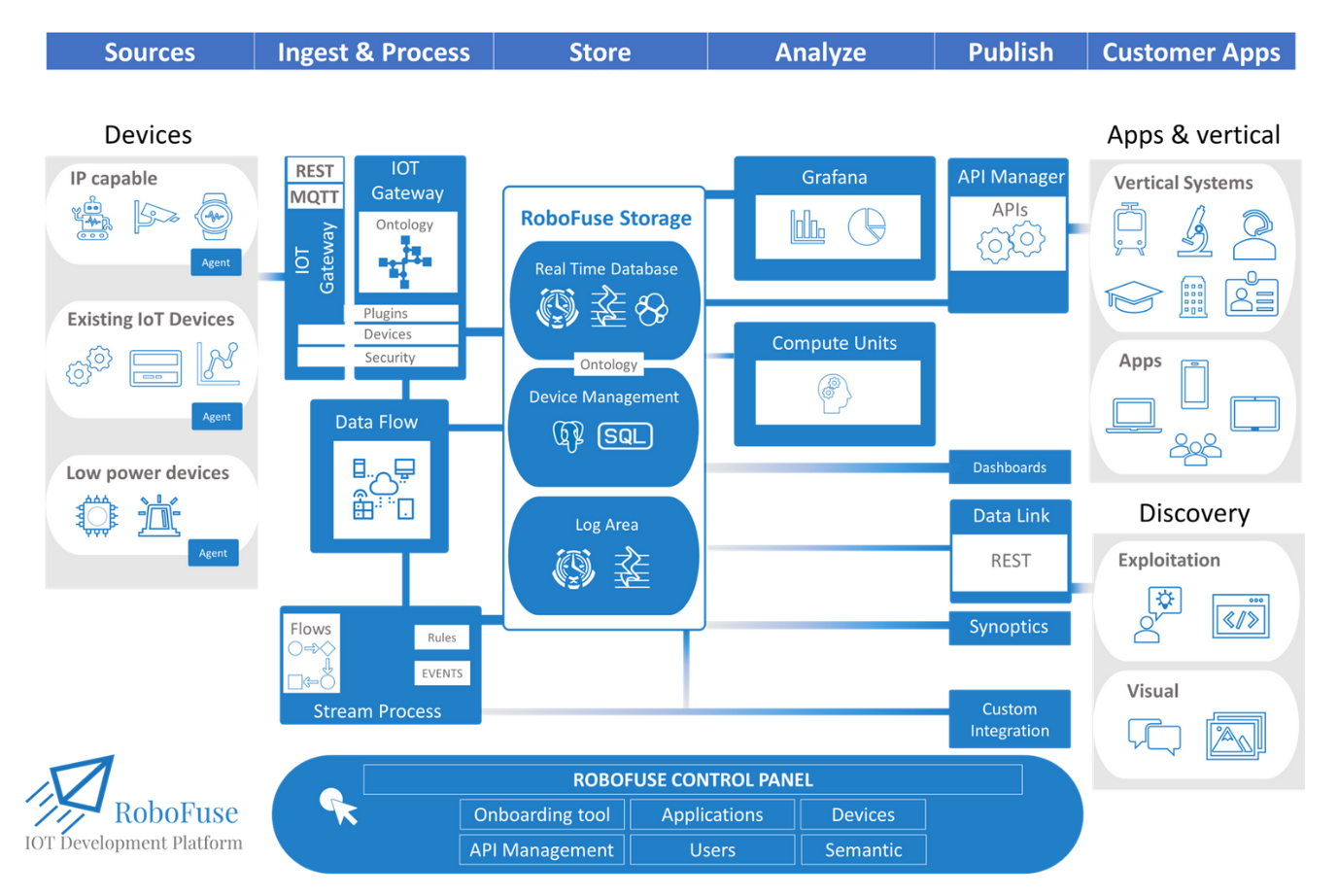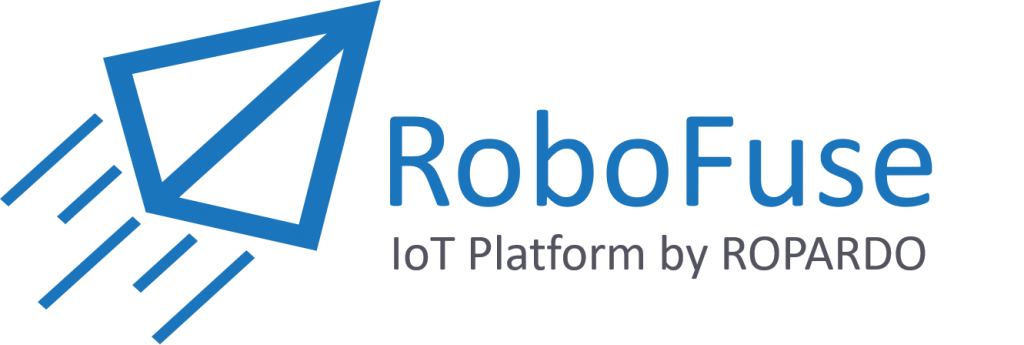RoboFuse is built for developers
The RoboFuse software infrastructure stack consists of all the components and microservices required for IoT solutions, projects, or products.
The IoT Platform will facilitate their integration and allow them to communicate with existing enterprise applications and with other IoT solutions.
Connectivity Message Routing & Normalization
It involves:
- Bidirectional communication (interaction) with a huge number of devices and gateways, using many different open protocols and data formats.
- Standardization of messages so they can be easily integrated into the rest of the infrastructure.
- Data security at the edge using encrypted channels. Support for multiple authentication factors (Authentication – Multi-level authentication) and specific data-access rules.
- Monitoring data usage, and generating notifications and alerts.
Features
Multi-protocol support and hardware agnostic
Connectivity for any device and any application
Ultra Performant broker
Normalizer
Technology
PUB/SUB multiprotocol messaging bridge HTTP Server, WebSocket Server MQTT Broker
Message broker, an open-source scalable messaging system used for message exchange within the RoboFuse platform itself
Normalizer
Device Management & Device Registry
- Assure the connected object, devices and gateways are working properly.
- Discover, register, and provision new devices.
- Remote configuration, device control & management, and troubleshooting
- Group devices by connection to channels (which correspond to the MQTT topic).
- Stop/reboot the selected devices.
- Manage organizations, users, and access rights
Features
Developer Console that holds users and their data and allows for custom configuration options Highly concurrent server backend
Different security layers: JWT, Tokens, user, and password
Bearer Token
Technology
Scalable and fault-tolerant for deployments (of devices and sensors)
Asynchronous control of devices
Discovery and provisioning of devices to facilitate deployment – device setup from box to cloud in minutes!
Data Management Data Aggregation and Storage Database
It involves:
- Gathering and processing data from devices, and storing it in a database – you get a scalable data warehouse capable of handling the volume and variety of IoT data
- The enablement of device data synchronization
- Storage scalability
Features
Support for databases that store and process data in multiple data models.
Scalable for big data and able to store both structured (SQL) and unstructured data (NoSQL).
Technology
Internal database PostgreSQL (device metadata)
Time Series database for sensors data
Bearer Token
Application Enablement
- A platform for developing custom IoT applications and industry-grade IoT solutions, rapid prototyping, and intelligent products.
- Provide seamless device provisioning and/or intelligent product access management.
- You can integrate your solution or device data with other key applications and web services.
Features
Developer and user-friendly.
Setting up the application is quick and easy, enabling developers to reduce implementation time.
Technology
A set of software SDKs and pre-built client libraries for various HW platforms in several programming languages
Set of well defined and documented APIs
Identity Provider for OpenID Connect (OAuth 2.0)
NGINX load balancing
Data Visualization
Comprehend data at a glance:
- Complex information is portrayed in graphical form: real-time sensor data- reports, graphs, dashboards of different data types, telemetry, statistics, geolocation, and metadata. The resulting visuals are designated to help you compare data and in decision making.
- Interactive user interface for device management sending commands, changing configuration and metadata, etc.
Features
Developer and user-friendly.
Setting up the application is quick and easy, enabling developers to reduce implementation time.
Technology
A set of software SDKs and pre-built client libraries for various HW platforms in several programming languages
Set of well defined and documented APIs
Identity Provider for OpenID Connect (OAuth 2.0)
NGINX load balancing
Integration Capabilities
- The architecture is open, modularized, and flexible with many IoT protocols and easy-to-use APIs that guarantee seamless 3rd-party integration with existing enterprise systems ( (e.g., ERP, BI, CRM), databases, analytics programs, back-end systems, and other cloud services.
Features
Microservices modularized architecture.
Integration with minimum configuration.
Extensible: add new functionalities for solutions and applications without a reconfiguration or modification of the core platform. The platform allows the continued flow of data and operations while the desired functions are extended.
Technology
Built-in application programming interfaces (API), software development kits (SDK ), and gateways
IoT Protocols: HTTP Server, WebSocket Server MQTT Broker
Usability
Utilize Node-RED Visual Engine, a well-known no-code environment that offers a drag-and-drop interface that is seamlessly integrated with all components.
Features
It enables rapid development and continuous integration of edge-to-cloud data solutions.
Is a web-based application, so it is accessed via a web browser. This way you can build, simulate, deploy and manage data workflows.
Technology
Node-RED
Security
- RoboFuse has a dedicated authentication and authorization service that protect the system from unauthorized access and unauthorized devices and applications.
- All messages and all network traffic coming from or to RoboFuse are encrypted by the latest security standards (TLS v1.3).
Features
Developer and user-friendly.
Setting up the application is quick and easy, enabling developers to reduce implementation time.
Technology
A set of software SDKs and pre-built client libraries for various HW platforms in several programming languages
Set of well defined and documented APIs
Identity Provider for OpenID Connect (OAuth 2.0)
NGINX load balancing


